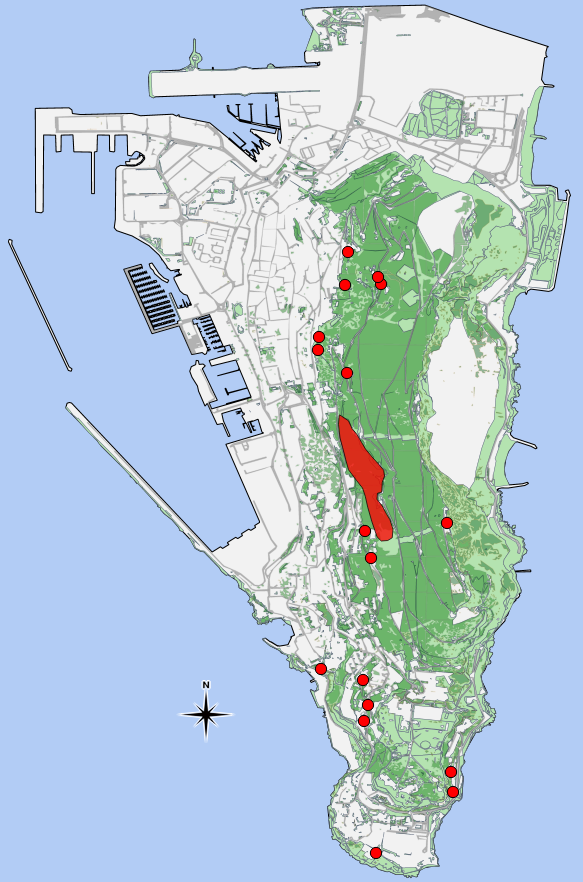Senecio angulatus L.f.
A straggling, climbing, hairless perennial, which can reach 5 metres or more. Leaves shiny, thick, somewhat fleshy, ovate, generally 5 to 7 lobed/toothed, without bracts; 3 to 6 cm long, 2 to 6.5 cm wide. Petioles about as long as the leaves, sometimes twining. The uppermost leaves bract-like, elliptical to lanceolate, entire. Flowers in branched, more or less flat-topped corymbs. Flowers yellow, 2 to 2.8 cm across; with 5 to 6 ray florets, 9 to 12 mm long. Involucre 6 to 7 mm long, 3.5 to 4.5 mm wide, hairless; with an additional row of about 5 purple-tipped bracts. Achenes 2.5 to 3 mm long, with a pappus of rough hairs 6 to 7 mm long.
Local: An introduced species which has become naturalised, and is spreading in various parts of Gibraltar, especially the lower slopes of the Upper Rock.

Global: Native to South Africa, grown as an ornamental world-wide. Has naturalised in the Meditteranean and Australia and New Zealand where it has become an agressive weed.
Flowers from December, January, february, March, April to May.
